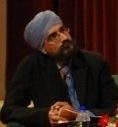
by Habhajan Singh
Malaysian takaful operators have fared better than their Middle East counterparts in terms of returns on equity since 2007 when world economies underwent the global financial crisis stress.
Malaysian takaful companies also came out better than their Gulf Cooperation Council (GCC) counterparts in terms of risk retention, an indication that Malaysia has a more sophisticated operational capability, according to a global study on takaful by Ernst & Young (E&Y).
The study, in E&Y's third annual edition of its World Takaful Report, showed that Malaysian takaful operators also came out better on technical fronts like claims ratio and underwriting income.
On retention, Bank Negara Malaysia's (BNM) Financial Stability and Payment Systems Report 2009 released in March, had noted that the 'consistently high' net retention level of 72.3% for Malaysian general and general takaful business enabled counterparty reinsurance risks to be kept at 'manageable level'.
It added that as a majority of the offshore and foreign reinsurers were reputable and strongly rated companies, it further reduced the extent of counterparty risk during the challenging financial climate in 2009.
Looking at claims ration, the E&Y report said that claims ratio for takaful operators in the GCC - which includes Bahrain, Saudi Arabia, United Arab Emirates (UAE) and Qatar — 'remain significantly higher' than Malaysian takaful operators 'where underwriting practice appears more structured'.
The report also said that underwriting income has consistently contributed to the profitability of the Malaysian operators while the GCC operators traditionally relied on investments.
Among the GCC takaful operators that contributed data to the study's sampling were Bahrain's Takaful International Company and Solidarity Group Holding; Saudi Arabia's Allied Cooperative Insurance Group, Al Ahlia Cooperative Insurance Company and Alahli Takaful Company; UAE's Abu Dhabi National Takaful Company, Dubai Islamic Insurance and Reinsurance Company, Dar Al Takaful; Qatar's Qatar Islamic Insurance Company; and Kuwait's First Takaful Insurance Company, Wethaq Takaful Insurance Company and Gulf Company for Takaful Insurance Malaysia.
Malaysian players involved were CIMB Aviva Takaful Bhd, Hong Leong Tokio Marine Takaful Bhd, Prudential BSN Takaful Bhd, Takaful Ikhlas Sdn Bhd, AIA Takaful International Bhd and Syarikat Takaful Malaysia Bhd. On ROE, the report study showed that both Malaysian and GCC operators were closest in 2007, with GCC operators averaging at 6.2% while Malaysian operators averaged at 5.7%. Before that, GCC players were constantly scoring higher on the ROE score.
However, post-2007 debt debacle and the financial crisis, the Malaysian operators performed better, with an average return of 11.1% in 2008 and 7.6% in 2009, while GCC players were in the negative zone (-5.3% in 2008 and -6.5% in 2009).
When it comes to operating efficiency, the study found that Malaysia has been consistently stronger in its combined ratios to the GCC, 'although the gap is shrinking'. in 2005, Malaysian operators surveyed had averaged at 41.3% to GCC's 130/8%. In 2009, it was Malaysia at 53.3% and GCC at 71.9%.
"Profitability is under unprecedented stress. In the aftermath of the financial crises, takaful operators are coping with depressed capital levels, distressed asset values and difficult capital markets," E&Y said in a statement when the report was released.
(This story appeared in The Malaysian Reserve on 26 April 2010. The Malaysian Reserve is a daily business/finance newspaper published out of Kuala Lumpur, with a sectoral page on Islamic finance on Mondays, edited by Habhajan Singh)

No comments:
Post a Comment